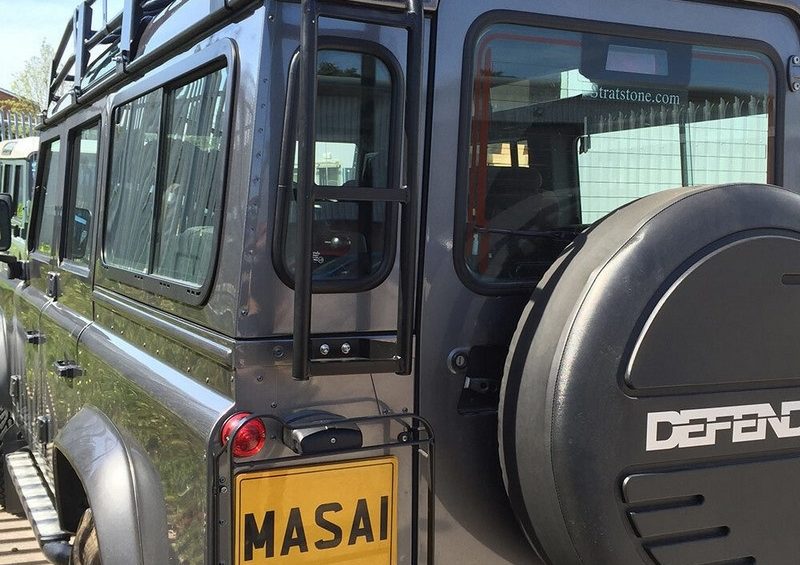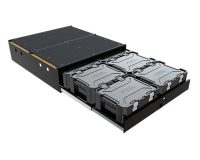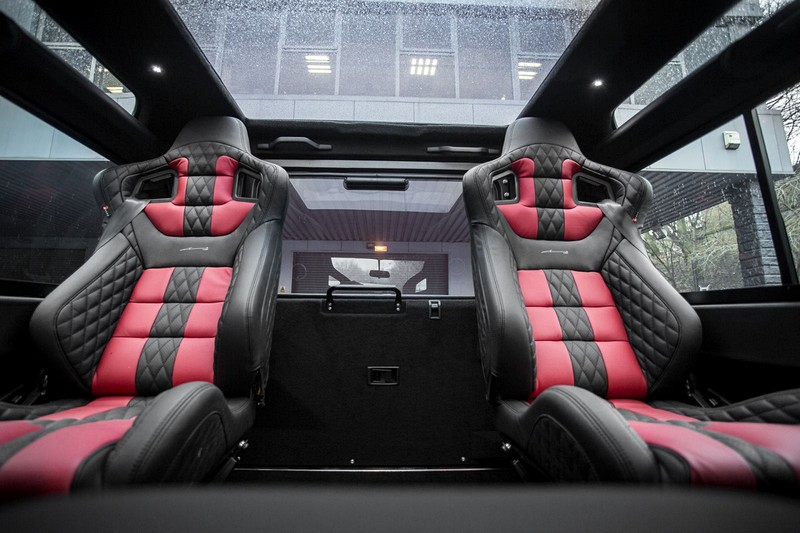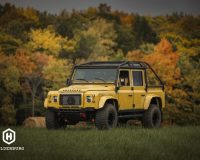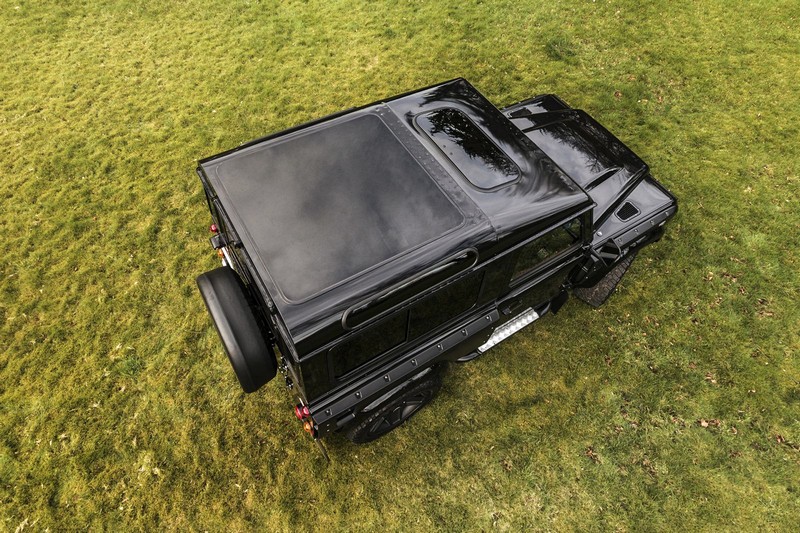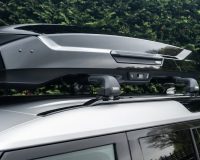A Brief Word on Defender Nomenclature…
Much like its American counterpart, the Jeep, the story of the Land Rover Defender began with humble military origins. Heavily modified American trucks were used by the British army throughout World War II, and most notably in Northern Africa, where the Long-Range Desert Group gained great notoriety for waylaying German forces using unconventional tactics. A prerequisite for this unit was a reliable, tough vehicle that could navigate rocks, mud, and deep sand with ease, all while carrying tons of gear.
The Brits took these lessons to heart and set about developing a vehicle of their own, and in 1948, the original Land Rovers hit the market. Initially known as the I, II, and III series, these rather primitive trucks were refined just a bit, and finally, the Land Rover 90 and the Land Rover 110 (named for their wheelbases, in inches) were unveiled in 1983. Later on in 1990, these two trucks received the name Defender, and after that, a Defender 130 joined the lineup, as well.
It’s easy to get a bit in the weeds regarding model names when talking about the original Defender series, but for the scope of this article, we’ll include anything made after 1983: 90s, 110s, 127s, and 130s are all welcome here, except the brand-new L663 Defenders, which we’ll cover in another article. While the sale of all of these variants was phased out in the United States over 20 years ago, they are still in common use throughout the rest of the world.
Much like the Jeep, these Defenders were (and still are) kitted out frequently and enthusiastically, to meet the needs of their owners. While the aftermarket doesn’t quite approach the levels of mass production of its American cousin, decades of research and development have ensured that there are more than enough parts and accessories available for the vintage Land Rover enthusiast, many of them handmade by small, specialty companies. Here are five great accessories that will look the part on your old Defender.
Bearmach Aftermarket Wheels
You know what they say – opinions are like preferences in wheel style and size. Everybody has their own, and it’s a great way to substantially alter the character of your vehicle, if you’d like. Bearmach specializes in creating rotating assemblies for Land Rovers, and offers a variety of sizes, styles, and widths for you to choose from. 15” or 16” wheels would be the most popular offerings, and of those, the 16” size will give you the most choices in terms of what tires to wrap them with. For a clean, classic look, consider the simple steel wheels – or “steelies,” as they’re called. These will pair great with your all-terrain or mud-terrain tire of choice, and don’t forget to pick up a full-sized spare, too!
Snorkel Intake
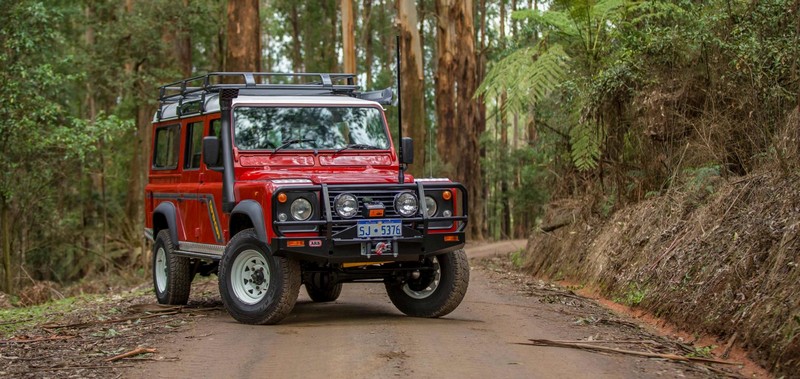
Snorkel intakes serve to raise the air inlet from around the wheel wells to, or above, the windshield. This is commonly seen on actual safari vehicles, where fording deep puddles might require you to almost completely submerge the vehicle. In addition to preventing your motor from hydrolocking due to water intrusion, snorkels also have another benefit that might be overlooked; they also dramatically help reduce the dust that your motor sucks in, increasing the longevity of your air filter and reducing MAF sensor fouling in fuel-injected vehicles. In fact, you can even buy a “pre-filter” element to put at the very end of your snorkel, which collects even more contaminants and allows you to dump them out of the catchment at your convenience. Their usefulness isn’t limited to those on the Australian or African continents; enthusiasts in arid, dusty regions like the Western United States can all benefit from this simple modification, even if the vehicle stays primarily on the pavement. Many manufacturers for these have sprung up over the years, but for Land Rover applications, the best choice is likely to be the classic ARB snorkel. They boast a high build quality and years of happy customers behind them.
And, let’s face it – snorkels just look plain cool, right?
Spare Gas Cans (“Jerry Can”)
For those looking to add a little extra range and military-inspired visual flair to their Defenders, an extra five-gallon gas can (or two) has the perfect blend of form and function. While the molded plastic RotoPax containers are a popular choice among the Jeep and Toyota crowd these days, the old-school, steel “NATO” jerry cans will last a lifetime, and look much more period-correct on your old Land Rover. While the plastic type may buckle and warp over time due to UV exposure in sunny climates, you won’t need to worry about that with this style of construction. Two great NATO gas cans are currently offered by Wavian and Scepter; you might also get lucky and find a few at your local military surplus store, too.
Safari-Style Roof Rack
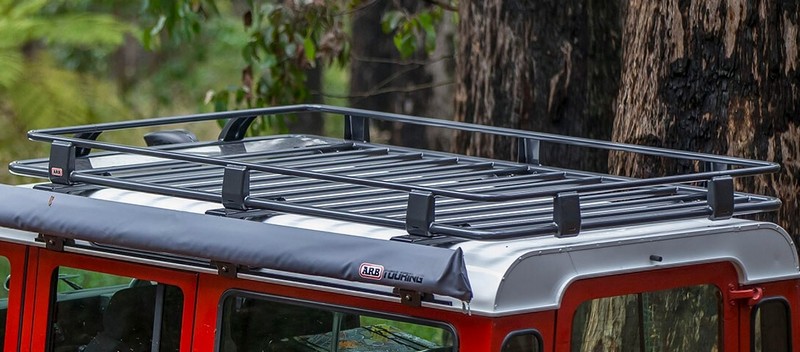
A roof rack is almost mandatory equipment on any vintage of Defender. For a newer (L663) variant, there are a few sleek, low-profile designs on the market that look great. However, if you’re blessed with one of the original Defenders, it’s hard to beat a traditional safari-style roof rack. These cover the entirety of the roof and feature a “basket” design, which is not only incredibly practical for actually transporting cargo, but compliments the retro aesthetic of an older Defender perfectly. In addition to the obvious benefits that a roof rack provides, the perimeter rails also make great places to mount auxiliary lighting and radio antennas. Generally, these will need to be mounted to your rain gutters, or you can also attach them to commonly available crossbars (such as those from Thule or Yakima). The racks from Atlantic British are likely the most popular among enthusiasts, and they offer a variety of mounting options and sizes depending on what specific model you’re looking for. Or, if you’re already placing an order for an ARB snorkel and the tall roof rack aesthetic doesn’t appeal to you, consider an ARB Flat Roof Rack, which is another great-looking option (ARB also offers the traditional safari-style racks as well).
Rear Ladder
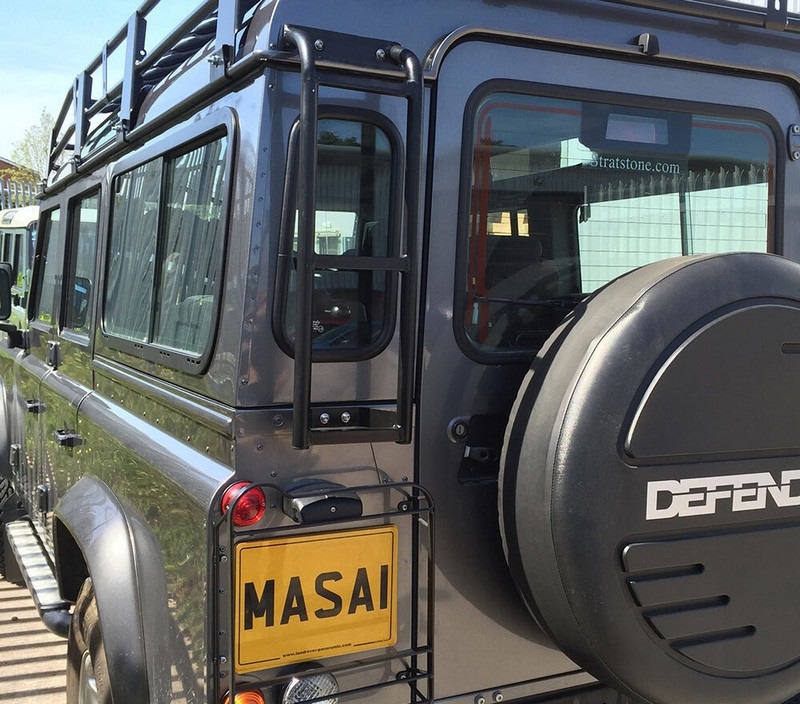
If you’re going to add a safari-style roof rack (and indeed, even a snorkel), you might as well go ahead and complete the look with a rear ladder. While these look incredibly cool and rugged, they will also help you access your roof-stowed cargo, in addition to providing a little extra protection for your taillights and rear windows. Masai 4×4 offers a few different choices of roof ladders at a surprisingly affordable price point for the Defenders 90 and 110. Incidentally, these can also make good mounting points for other gear such as shovels, recovery boards, or even a hi-lift jack for when the going gets very tough.
Conclusion
All of these accessories will not only increase the utilitarian value of your truck, but also help to put your own personal touch on it. The other great thing about these parts? In most cases, they’re non-destructive and easily removable in case you’d like to change things up in the future, and you can install all of them yourself and without any specialized tools. While these older Defenders look great as they left the factory, they also look great when personalized to an owner’s liking, and by starting with any combination of the above accessories, it’s impossible to go wrong.

